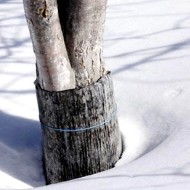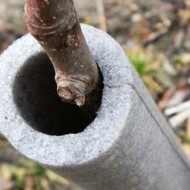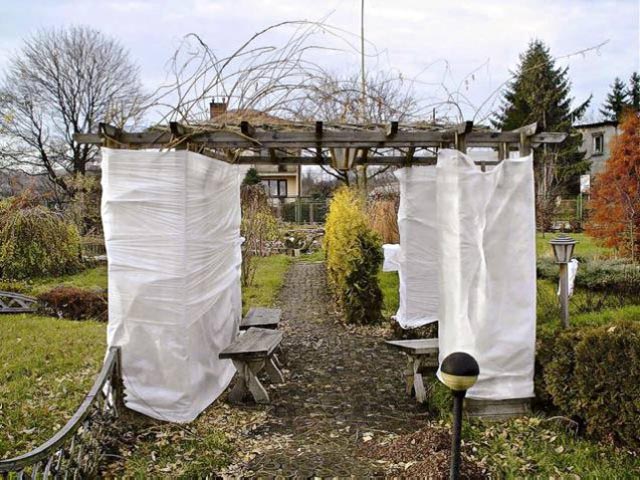How to insulate a pear for the winter and protect it from frost
Content
Preliminary measures
With the arrival of autumn, every summer resident thinks about how to prepare a pear for winter so that the tree does not freeze and quickly recovers with the onset of warmth. First of all, fruit crops are examined for the presence of parasites and signs of disease. If necessary, the garden is treated with special preparations that protect against insects and pathogens of various infections.
In early September, potassium sulfate and superphosphate are added to the soil. It is better to save nitrogen-containing preparations until spring. Around the middle of autumn, water-charging watering of fruit trees is carried out. However, if autumn turned out to be rich in precipitation, you can refuse watering or reduce the amount of water several times. The soil should be saturated to 1 m. After the water is absorbed, the soil in the near-trunk circle is mulched with peat, sawdust, straw, coniferous branches or dry fallen leaves. Keep the foliage free of harmful insects. A layer of mulch protects the pear from cooling during an unexpected thaw and a sharp further cold snap.
One of the stages of preparing a pear for winter is sanitary pruning of the crown. Every autumn, the branches of fruit trees must be cut off, removing old, dried, injured and damaged by diseases and insects.

Video "Preparing a pear seedling for wintering"
In this video, you will learn how to protect a newly planted pear seedling from small rodents.
Insulation of the trunk and branches
They begin to warm the pear after harvesting and with the onset of the first cold weather. The method of sheltering fruit trees depends on the climatic characteristics of the growing region. It is equally important to take into account the varietal characteristics and age of the plants. So, sheltering young pears for the winter requires more attention and time when compared with mature trees.
Choice of materials
The procedure for warming a pear for the winter begins with the selection and preparation of the covering material. Thus, fruit crops cultivated in the southern regions are wrapped in burlap, white polypropylene bags, non-woven cloth, agrofibre or lutrasil. Pears grown in the Leningrad region, Siberia, the Urals and other regions with severe frosts are additionally covered with spruce branches, brushwood, wooden boards and slate sheets.
Shelter technique
It is not difficult to prepare fruit trees for wintering if you adhere to simple rules for warming plants. So, let's figure out how to properly insulate a thermophilic fruit crop.
They begin to cover the pear tree from the root collar. The trunk circle is mulched with peat, humus, straw, sawdust and dry foliage. The height of the mulch layer should be within 3-5 cm. It is especially important to insulate well the root collar of a young, still not fully matured pear. During an unexpected thaw, a layer of mulch protects the tree from excess moisture and glaciation during further frosts.
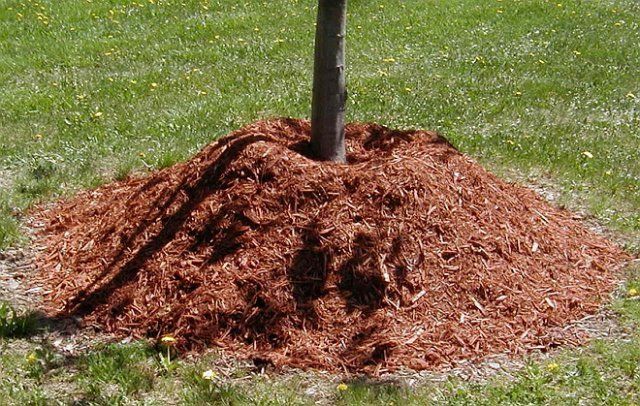
The next stage is the insulation of the branches and the trunk of the tree. First, you need to remove all the supports so that the branches descend to the ground.In order for young shoots and skeletal branches to descend as low as possible, use "weights" in the form of sand, dry soil, vegetable tops, coniferous branches and other vegetation. It is recommended to carefully wrap the trunk of a pear tree and the base of skeletal branches with a covering material, in which there should be small holes for air circulation.
Please note that the use of synthetic and moisture-proof covering materials leads to the accumulation of moisture inside, which is fraught with rotting of the tree.
Features of insulation in different regions
Autumn care for a pear and preparation for the upcoming cold weather depend on the characteristics of the climatic zone where the tree grows. For example, the Volga region is characterized by a temperate climate. Therefore, the preparation of a fruit crop will not take much time. The first step is to cover the root collar, and then insulate the pear stem with strips of thick paper. Pears aged 4 years and older are mulched, but not insulated with a covering material.
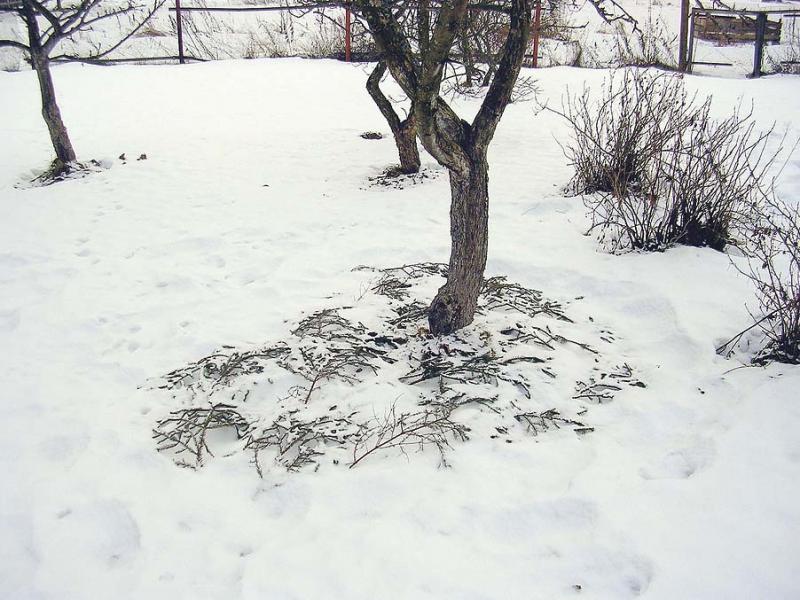
The middle zone of Russia, including the Moscow region, is distinguished by a warm climate. The preparation of a thermophilic pear for frost consists in the correct pruning of the tree and the competent shelter of young shoots and the root collar.
The trunk circle is mulched with a layer of peat, sawdust and coniferous branches. The first snow that has fallen is collected and poured over a layer of mulch.
As for regions with cold and harsh winters, you need to take a more responsible and careful approach to the insulation of fruit trees. During severe and prolonged frosts in Siberia and the Urals, the pear is completely insulated with a covering material. For a more reliable fixation, the insulation is covered with boards and spruce branches.

